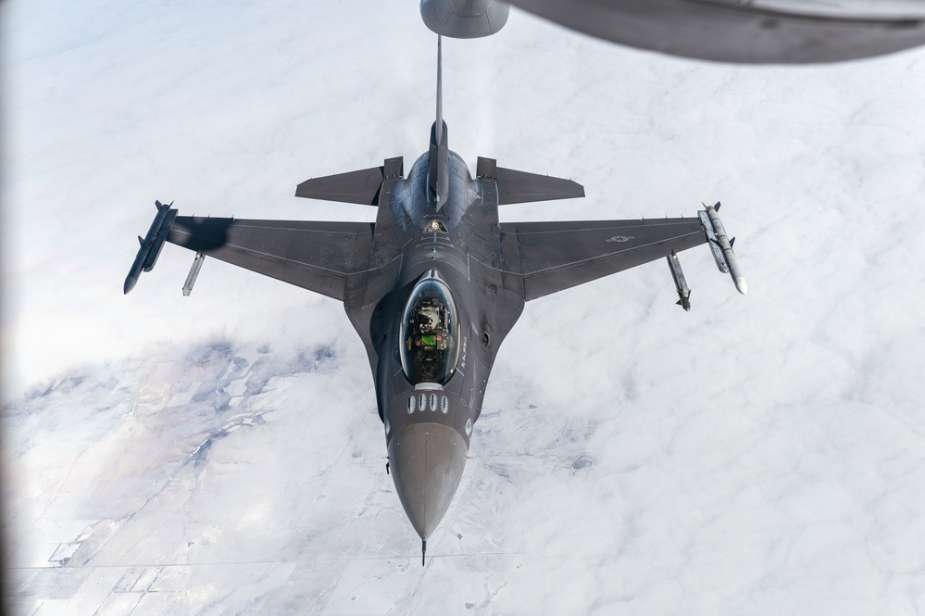Breaking news
U.S. Air Force Announces Test of AI-Piloted Fighter Jet.
On April 9, 2024, the U.S. Air Force declared its plan to integrate over 1,000 autonomous drones, highlighting a significant shift in military strategy. This spring, Air Force Secretary Frank Kendall is set to participate in a test flight of a converted F-16 fighter jet now operated by artificial intelligence, showcasing the practical application of AI in combat scenarios. This announcement was made during a Senate Appropriations Committee hearing where Kendall discussed the service's 2025 budget.
Follow Army Recognition on Google News at this link

The AI was integrated into the system of a specially modified F-16, known as the X-62A or VISTA, at Edwards Air Force Base in California (Picture source: US DoD)
Kendall explained that during the flight, he and a co-pilot would monitor the AI's control of the jet without intervening in its operation. This test underscores the increasing importance of drone warfare, which has evolved from a supplementary tactic to a central component of combat operations. Drones are now a common presence in conflict zones such as Ukraine and the Middle East, where they are used both defensively and offensively by various groups.
The use of unmanned aircraft in combat is part of the Air Force's broader strategy to develop a fleet of collaborative combat aircraft (CCA). These CCAs, also known as "loyal wingmen," are designed to support manned jets, allowing for more effective coordination and execution of complex missions. The development of this drone fleet is driven by the need for sophisticated air defense penetration, especially in light of the advanced anti-access capabilities of potential adversaries like China.
The Air Force is heavily investing in this future capability, with a proposal of $559 million in the 2025 budget allocated to the research and development of the CCA air system. These drones are not only expected to enhance operational efficiency but also to significantly reduce costs compared to manned jets. Kendall noted that each drone could cost about a quarter to a third of what an F-35 fighter currently costs, estimated at $20 million.
In August 2020, as part of its Air Combat Evolution (ACE) program aimed at developing new "human-machine" interfaces for aerial combat, DARPA, the Pentagon's innovation agency, organized the "AlphaDogfight" competition. In this event, an experienced F-16 pilot went head-to-head in five rounds against an artificial intelligence algorithm developed by Heron Systems, with the AI coming out on top. The specific conditions of the contest and the fact that the F-16 pilot was not in his usual environment largely explained the outcome.
These tests are part of the ACE program, which seeks to "develop scalable, trustworthy, human-level autonomy driven by AI for air combat." DARPA and the Air Force's Test Pilot School (TPS), have tested several AI systems capable of piloting an aircraft. The algorithms were developed in collaboration with civilian companies including EpiSci, PhysicsAI, Shield AI, and the Johns Hopkins Applied Physics Laboratory.
Defense News April 2024























